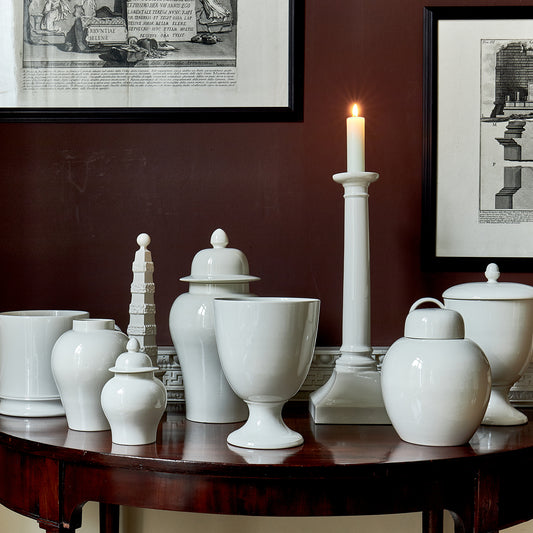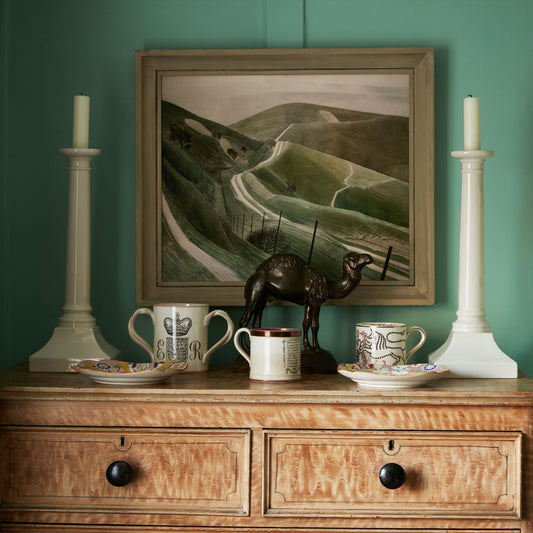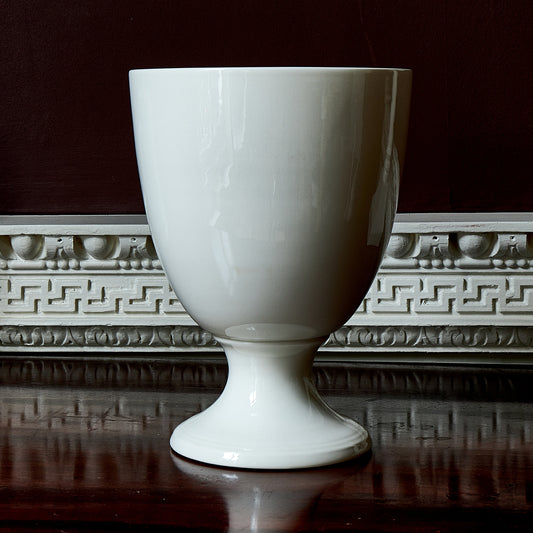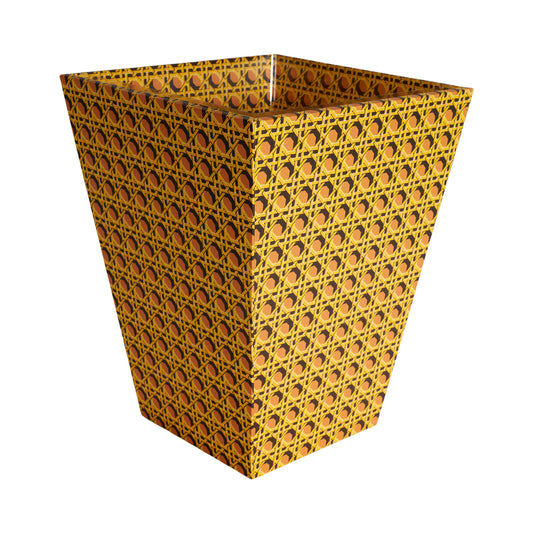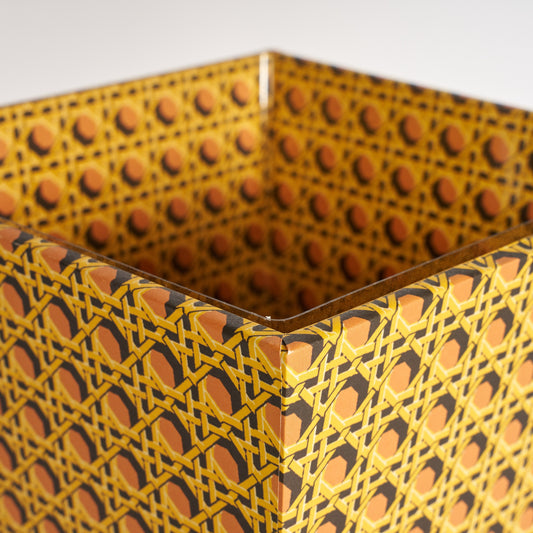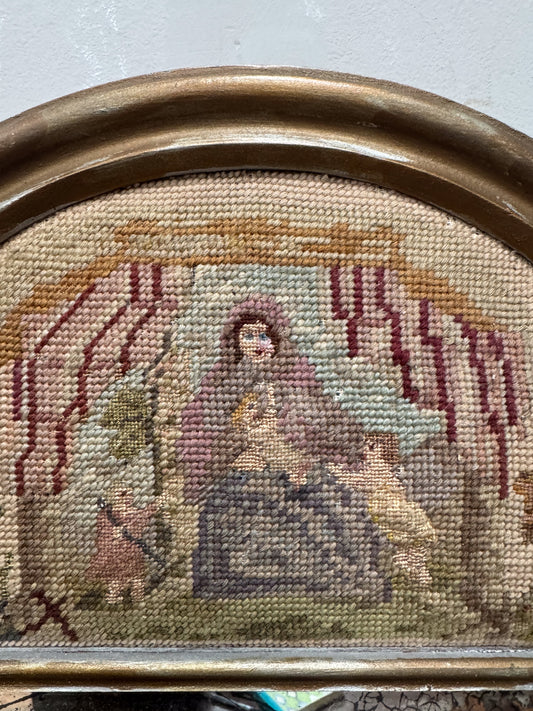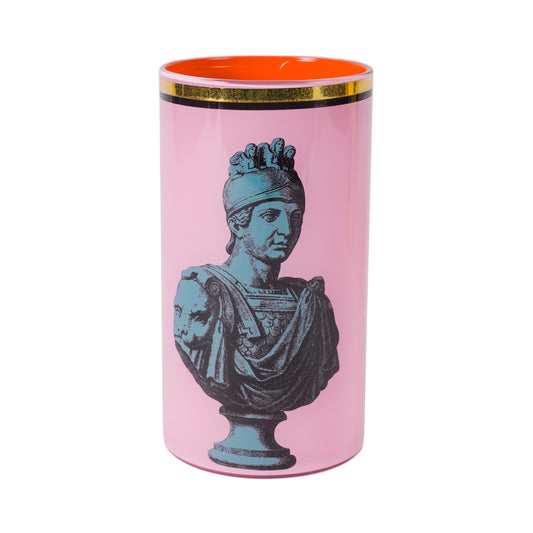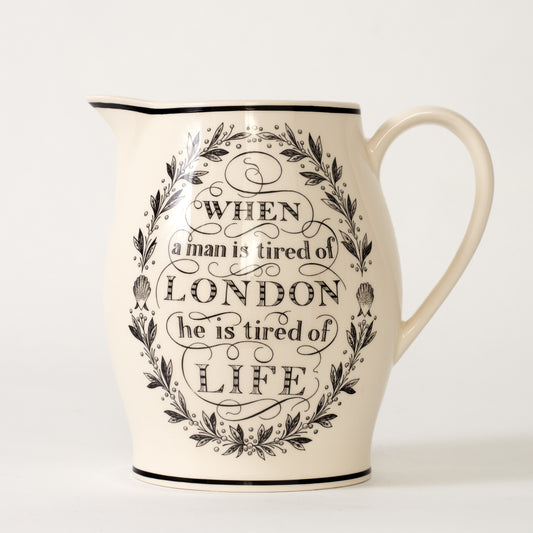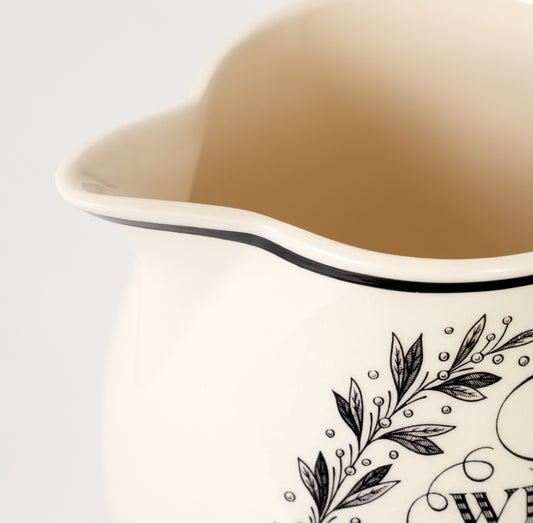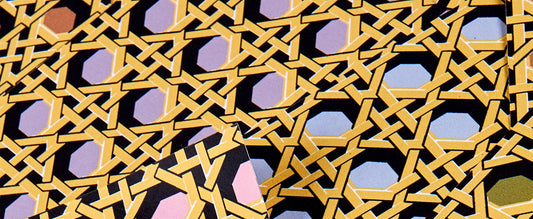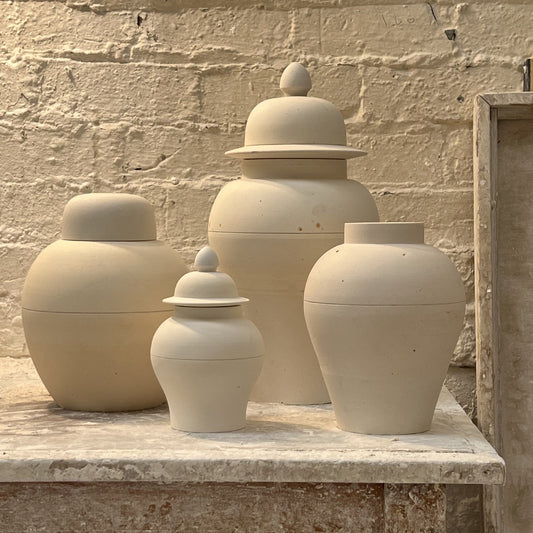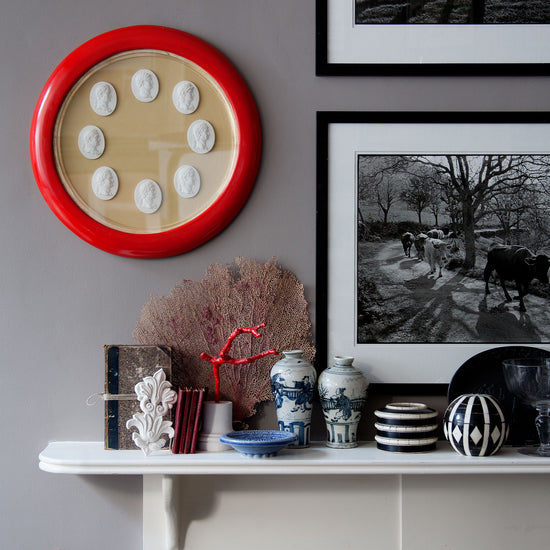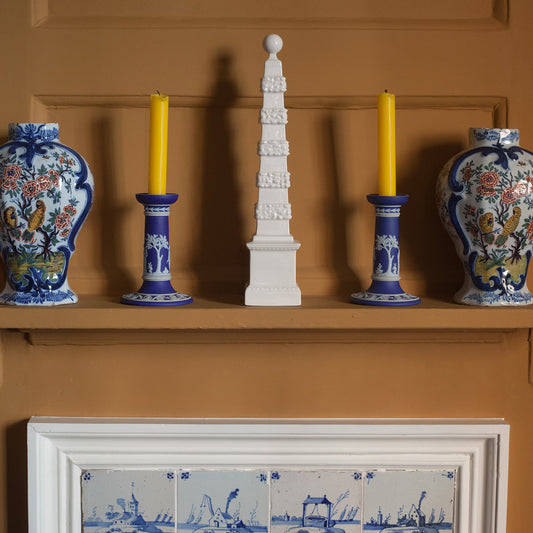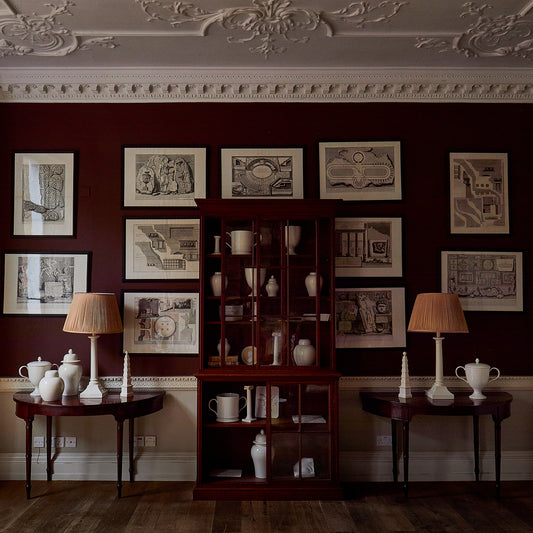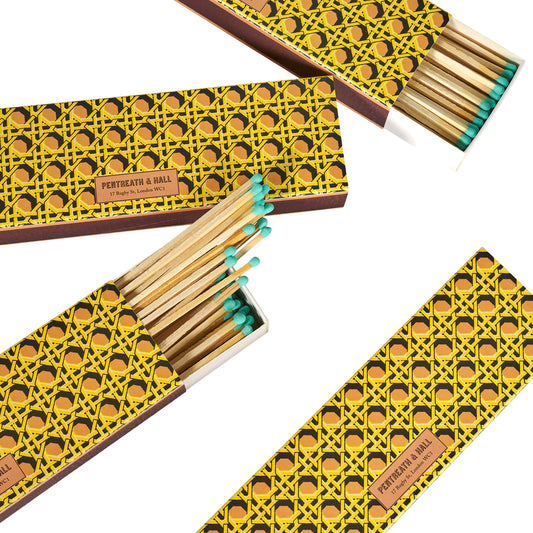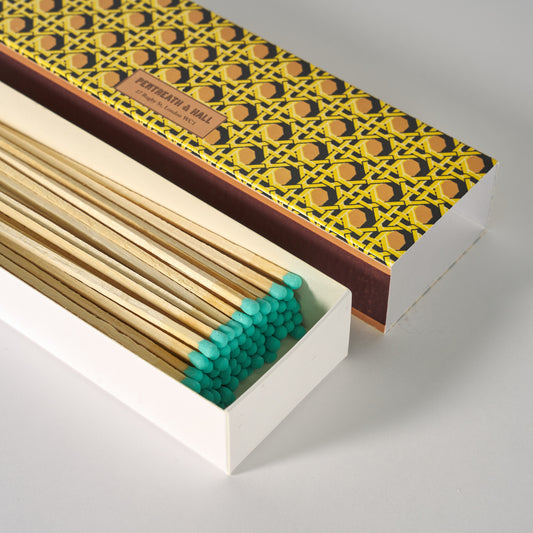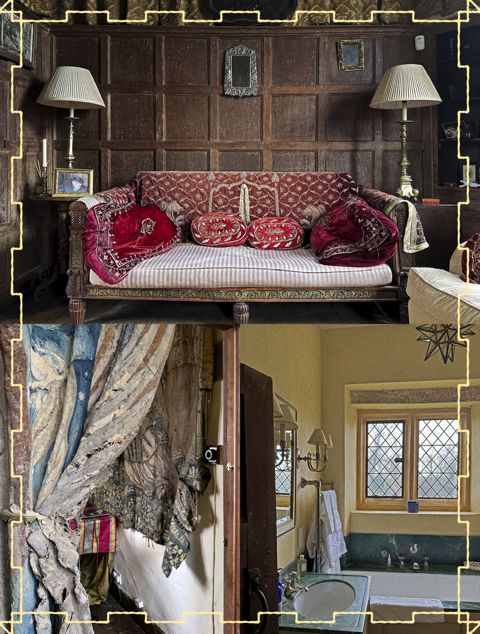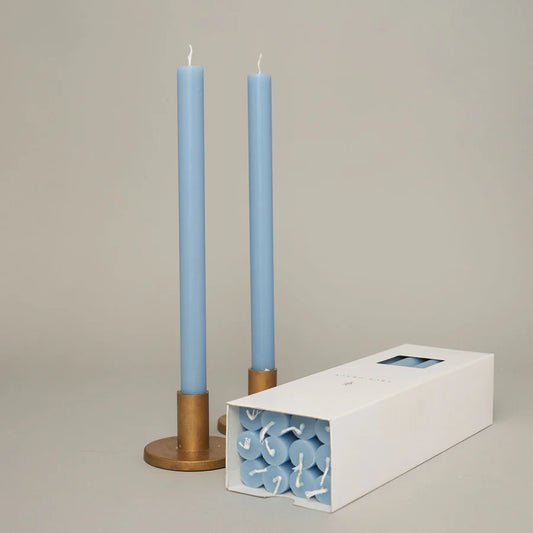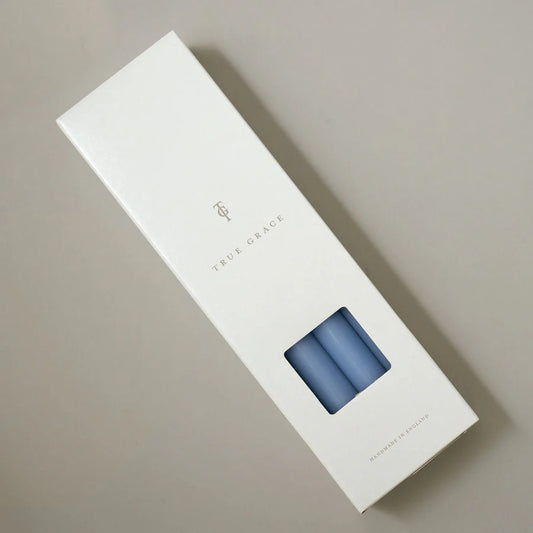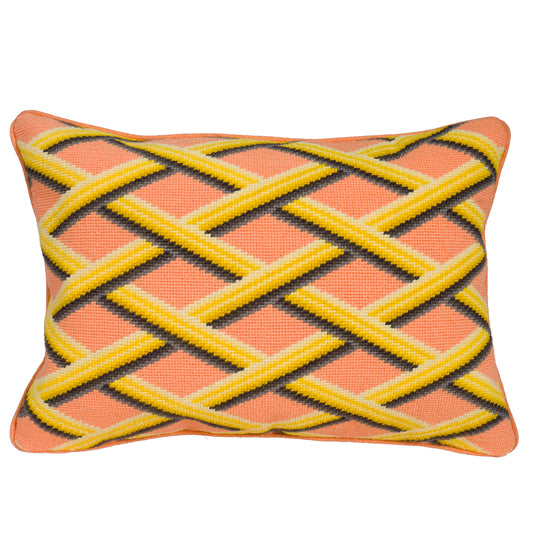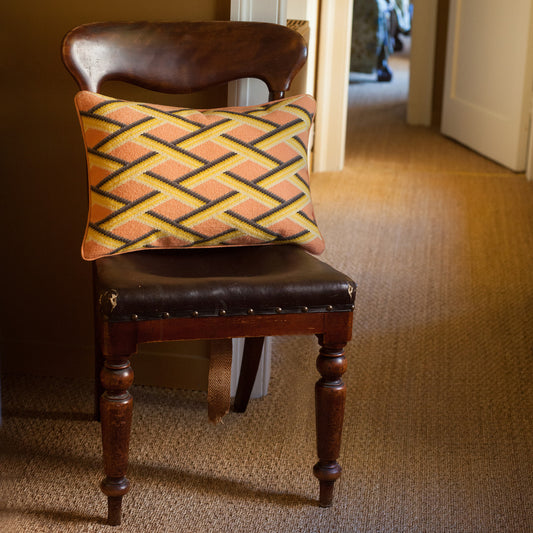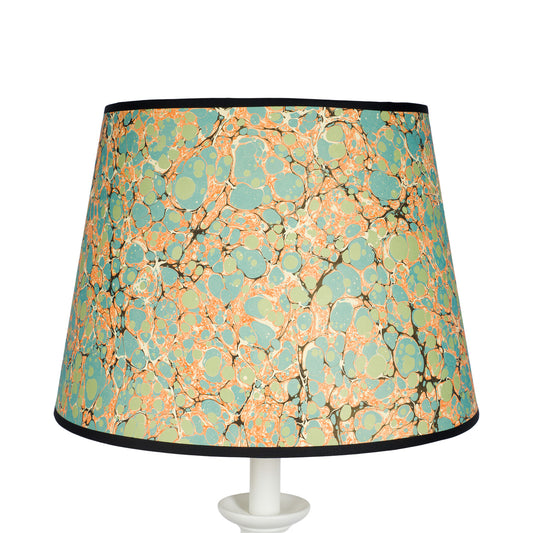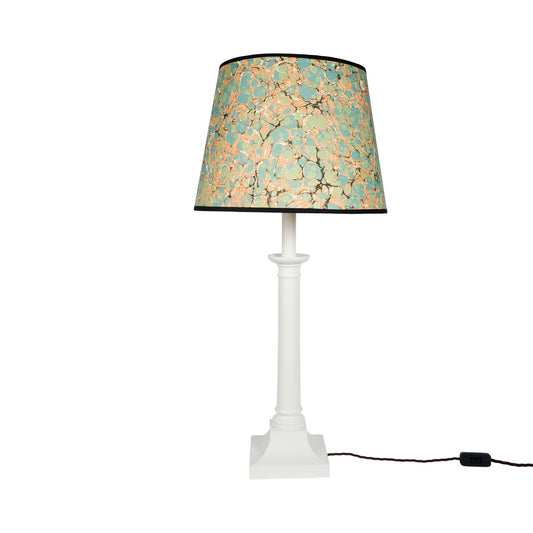After last week’s final call on the Wedgwood Museum Ravilious mugs, it is with a very heavy heart that I have to tell you our beloved Hunslet Creamware has now been discontinued.

I can’t say it has come as a surprise; I have noticed when placing orders for the shop over the last few months that less and less have been available. I am particularly sad about it because I visited Stoke-on-Trent some time ago and its rather bittersweet that I now share with you the experience I had.
It was spring and I had been invited to visit Leeds Pottery – before it relocated to the Middleport Pottery some fifteen minutes down the road.
It was my first time in Stoke-on-Trent and the first time I had knowingly visited an area within the U.K, which had been built by its industry. Since then I have taken the time to learn a bit more about the history of building such a great British industry and how at its peak it was literally the centre of the universe (I grew up in New Zealand, so our history classes didn’t cover this). I love the power and innovation that there was and I am sad that it has all but been moved offshore when there are still the highly skilled craftsman and resources here to carry out the work.
Pottery production was established in Stoke-on-Trent because this is where the best clay was. The statue of Josiah Wedgwood, arguably the greatest potter in English history, greets you from his plinth outside the North Stafford Hotel opposite the train station, once both great buildings. Being driven through Stoke I couldn’t help but notice the many, now defunct but still beautiful, chimneystacks of the old kilns – remnants of better and busier days. I’ve never been to a place and seen so many boarded-up shop windows and empty factories that once would have been bustling. I found it really quite upsetting.
Arriving at the pottery I was warmly greeted and shown around by Debbie, I’d had a telephone relationship with her for years and it was so nice to finally meet her in person. Seven people worked there, each from a long line of pottery workers and each had started out as an apprentice to then go on to become highly skilled at what they did. At one point Debbie rather poignantly said ‘I can’t think of one family member who hasn’t worked in the pots, it’s just what you do here.’ I visited at a point when the Leeds Pottery was weeks away from moving down the road to Middleport and the staff was nervous. The daily fifteen-minute drive there and back was a big deal.
The Leeds Pottery.

Traditional life at the potteries meant that you lived in a potter’s cottage a very short walk away from where you worked, your entire life could be lived out within five minutes walking distance from your home. So the upheaval was huge, ‘We may as well be commuting to London.’ one of the potters said.

The tour took me from workstation to workstation and I was talked through each process in enthusiastic detail, I was astonished at the amount of work that goes into each piece and the quantities these seven people were able to so proudly produce.
Each pottery has their own Slip Master with their own secret slip recipe that they used.


This is the beginning of the lovely Hunslet footed mug.


Each handle is expertly applied by hand.

Here is the apprentice glazer.



Sadly, it was the lack of demand that saw to the demise of their Creamware.
As the market has become so competitive and saturated with cheap imports I feel the back-story and importance this kind of product has in our lives has been all but lost. I don’t think people see the value in this kind of everyday object any more, when it should be the opposite; the things we use everyday really should be the best! Historically pottery was among our most prized possessions.
Also known for their pierce work, each item is pierced out by hand using the most basic of guides.


 These were the moulds for what I think were called Spry’s
These were the moulds for what I think were called Spry’s
 Handles are rolled out by hand.
Handles are rolled out by hand.



The handles and spry’s are twisted and applied by eye.

A jug full of slip I fell in love with and wondered why it had been discontinued.

Leeds Pottery was very popular in the U.S. these were made exclusively to send there. Lucky Americans.

A lovely stack of Hunslet bowls ready for packing.

After the walk around Leeds Pottery I was taken to see the Middleport Pottery. On the way, we passed the rather impressive and unmistakable duck egg blue building of Wedgwood. I hope to return there on another visit. At this point I was told a rather fascinating piece of information about Waterford Crystal who are owned alongside Wedgwood: After they were bought by a private equity firm a few years ago, quite unsurprisingly the bulk of production was moved to China, except for the very highest quality pieces of Waterford that were still produced in Ireland. The biggest consumer of these? The Irish Travellers! Talk about prizing your heritage, I wonder what the history to that fact is?
The Middleport Pottery


One of the kilns under restoration.

My tour guide Colin.

Having been taken on by the Prince’s Regeneration Trust, the Middleport Pottery is the home of Burleigh and takes up 10 acres, made up of the Burleigh Pottery and a number of other smaller potteries. It’s a beautiful Victorian factory where everything, with the exception of electricity for the kilns and the clay which now comes from Cornwall – but still by way of canal, is produced the Victorian way. I was shown a rather complicated gadget and told that this was their most modern piece of machinery; it was from the fifties.
This is it.

Similarly to the Leeds Pottery visit, I was taken from station to station and warmly greeted by the workers, always happy to demonstrate what they were doing whilst at the same time never missing a beat in production. I was bowled over by how many hands a cup and saucer would pass through from start to finish. I counted seven. Seven highly trained craftsmen, each with their own specialist stage in the production. Two apprenticeships were offered every year here. ‘What was the staff turnover like?’ I asked. ‘There is none, these jobs are so specialised and highly prized.’ was the answer.
The Slip Master’s domain at Middleport.


This lady was smoothing off any rough edges.




And this lady holding a smoothing stone would tap each piece after its first firing, if it rang out it went on to the next step if not it was rejected. Every single piece of pottery passed through her.


This was a magical workshop where all the transfers were applied to the Burleighware.

Patterns printed out on cigarette paper hanging on the line.

This was the pattern roll they were using the day of my visit.

This is the printing machine, another relic from another era. Look at the roll of cigarette paper.


The process of getting the transfer onto the cup is one of brute force, these ladies wet the cup and then push in the transfer dissolving away the cigarette paper.

Each piece is washed by hand after receiving it’s transfer before going on to a final firing.


It was nearing the end of their day so time to be taken back to the station. A typical working day at the pottery starts at 8am and ends at 4pm and there were two compulsory two-week holidays every year, this would have been the time the wood burning kilns were cleaned and serviced. I love that the tradition is still maintained.
Google ‘potter’s holidays’ and you’ll be as surprised as I was by the nod to it’s past.
After being dropped off at the station with a little time before the train was due I went to the North Stafford Hotel for a drink. I asked what wine options were available. ‘Red and white’ the barman answered helpfully, there was no choice beyond that and it was happy hour so it cost £2 a glass. It was perfect. I will never forget my first visit to Stoke-on-Trent and look forward to the next.
So now, sadly, Leeds Creamware is no longer being made. We still have quite a bit in stock but are faced with a huge conundrum. What do we replace it with? Who makes a creamware collection as beautiful as this?

How I like to use my dinner set at home.


Having stood the test of time, from its original place ‘below stairs’ within grand country houses (you can see it in the staff kitchen on Downton Abbey) to pride of place in our modern day homes, it’s a tragedy that Hunslet Creamware’s significance and beauty is no longer valued enough to secure its future. Its simplicity, colour and shape are hard to beat and it is going to be very difficult if not impossible to replace.
After last week’s final call on the Wedgwood Museum Ravilious mugs, it is with a very heavy heart that I have to tell you our beloved Hunslet Creamware has now been discontinued.

I can’t say it has come as a surprise; I have noticed when placing orders for the shop over the last few months that less and less have been available. I am particularly sad about it because I visited Stoke-on-Trent some time ago and its rather bittersweet that I now share with you the experience I had.
It was spring and I had been invited to visit Leeds Pottery – before it relocated to the Middleport Pottery some fifteen minutes down the road.
It was my first time in Stoke-on-Trent and the first time I had knowingly visited an area within the U.K, which had been built by its industry. Since then I have taken the time to learn a bit more about the history of building such a great British industry and how at its peak it was literally the centre of the universe (I grew up in New Zealand, so our history classes didn’t cover this). I love the power and innovation that there was and I am sad that it has all but been moved offshore when there are still the highly skilled craftsman and resources here to carry out the work.
Pottery production was established in Stoke-on-Trent because this is where the best clay was. The statue of Josiah Wedgwood, arguably the greatest potter in English history, greets you from his plinth outside the North Stafford Hotel opposite the train station, once both great buildings. Being driven through Stoke I couldn’t help but notice the many, now defunct but still beautiful, chimneystacks of the old kilns – remnants of better and busier days. I’ve never been to a place and seen so many boarded-up shop windows and empty factories that once would have been bustling. I found it really quite upsetting.
Arriving at the pottery I was warmly greeted and shown around by Debbie, I’d had a telephone relationship with her for years and it was so nice to finally meet her in person. Seven people worked there, each from a long line of pottery workers and each had started out as an apprentice to then go on to become highly skilled at what they did. At one point Debbie rather poignantly said ‘I can’t think of one family member who hasn’t worked in the pots, it’s just what you do here.’ I visited at a point when the Leeds Pottery was weeks away from moving down the road to Middleport and the staff was nervous. The daily fifteen-minute drive there and back was a big deal.
The Leeds Pottery.

Traditional life at the potteries meant that you lived in a potter’s cottage a very short walk away from where you worked, your entire life could be lived out within five minutes walking distance from your home. So the upheaval was huge, ‘We may as well be commuting to London.’ one of the potters said.

The tour took me from workstation to workstation and I was talked through each process in enthusiastic detail, I was astonished at the amount of work that goes into each piece and the quantities these seven people were able to so proudly produce.
Each pottery has their own Slip Master with their own secret slip recipe that they used.


This is the beginning of the lovely Hunslet footed mug.


Each handle is expertly applied by hand.

Here is the apprentice glazer.



Sadly, it was the lack of demand that saw to the demise of their Creamware.
As the market has become so competitive and saturated with cheap imports I feel the back-story and importance this kind of product has in our lives has been all but lost. I don’t think people see the value in this kind of everyday object any more, when it should be the opposite; the things we use everyday really should be the best! Historically pottery was among our most prized possessions.
Also known for their pierce work, each item is pierced out by hand using the most basic of guides.


 These were the moulds for what I think were called Spry’s
These were the moulds for what I think were called Spry’s
 Handles are rolled out by hand.
Handles are rolled out by hand.



The handles and spry’s are twisted and applied by eye.

A jug full of slip I fell in love with and wondered why it had been discontinued.

Leeds Pottery was very popular in the U.S. these were made exclusively to send there. Lucky Americans.

A lovely stack of Hunslet bowls ready for packing.

After the walk around Leeds Pottery I was taken to see the Middleport Pottery. On the way, we passed the rather impressive and unmistakable duck egg blue building of Wedgwood. I hope to return there on another visit. At this point I was told a rather fascinating piece of information about Waterford Crystal who are owned alongside Wedgwood: After they were bought by a private equity firm a few years ago, quite unsurprisingly the bulk of production was moved to China, except for the very highest quality pieces of Waterford that were still produced in Ireland. The biggest consumer of these? The Irish Travellers! Talk about prizing your heritage, I wonder what the history to that fact is?
The Middleport Pottery


One of the kilns under restoration.

My tour guide Colin.

Having been taken on by the Prince’s Regeneration Trust, the Middleport Pottery is the home of Burleigh and takes up 10 acres, made up of the Burleigh Pottery and a number of other smaller potteries. It’s a beautiful Victorian factory where everything, with the exception of electricity for the kilns and the clay which now comes from Cornwall – but still by way of canal, is produced the Victorian way. I was shown a rather complicated gadget and told that this was their most modern piece of machinery; it was from the fifties.
This is it.

Similarly to the Leeds Pottery visit, I was taken from station to station and warmly greeted by the workers, always happy to demonstrate what they were doing whilst at the same time never missing a beat in production. I was bowled over by how many hands a cup and saucer would pass through from start to finish. I counted seven. Seven highly trained craftsmen, each with their own specialist stage in the production. Two apprenticeships were offered every year here. ‘What was the staff turnover like?’ I asked. ‘There is none, these jobs are so specialised and highly prized.’ was the answer.
The Slip Master’s domain at Middleport.


This lady was smoothing off any rough edges.




And this lady holding a smoothing stone would tap each piece after its first firing, if it rang out it went on to the next step if not it was rejected. Every single piece of pottery passed through her.


This was a magical workshop where all the transfers were applied to the Burleighware.

Patterns printed out on cigarette paper hanging on the line.

This was the pattern roll they were using the day of my visit.

This is the printing machine, another relic from another era. Look at the roll of cigarette paper.


The process of getting the transfer onto the cup is one of brute force, these ladies wet the cup and then push in the transfer dissolving away the cigarette paper.

Each piece is washed by hand after receiving it’s transfer before going on to a final firing.


It was nearing the end of their day so time to be taken back to the station. A typical working day at the pottery starts at 8am and ends at 4pm and there were two compulsory two-week holidays every year, this would have been the time the wood burning kilns were cleaned and serviced. I love that the tradition is still maintained.
Google ‘potter’s holidays’ and you’ll be as surprised as I was by the nod to it’s past.
After being dropped off at the station with a little time before the train was due I went to the North Stafford Hotel for a drink. I asked what wine options were available. ‘Red and white’ the barman answered helpfully, there was no choice beyond that and it was happy hour so it cost £2 a glass. It was perfect. I will never forget my first visit to Stoke-on-Trent and look forward to the next.
So now, sadly, Leeds Creamware is no longer being made. We still have quite a bit in stock but are faced with a huge conundrum. What do we replace it with? Who makes a creamware collection as beautiful as this?

How I like to use my dinner set at home.


Having stood the test of time, from its original place ‘below stairs’ within grand country houses (you can see it in the staff kitchen on Downton Abbey) to pride of place in our modern day homes, it’s a tragedy that Hunslet Creamware’s significance and beauty is no longer valued enough to secure its future. Its simplicity, colour and shape are hard to beat and it is going to be very difficult if not impossible to replace.
 These were the moulds for what I think were called Spry’s
These were the moulds for what I think were called Spry’s Handles are rolled out by hand.
Handles are rolled out by hand.














































